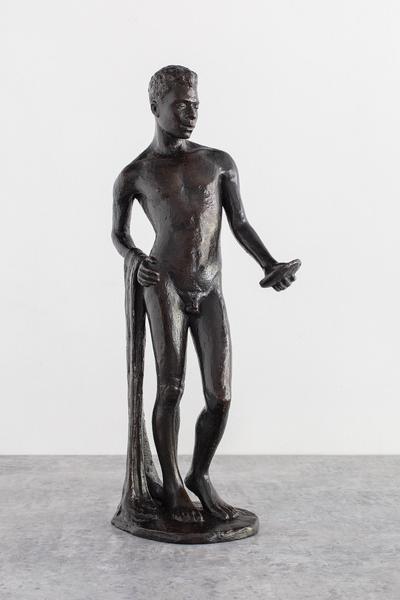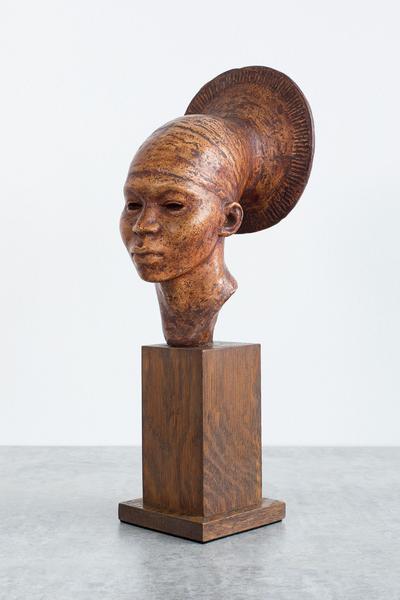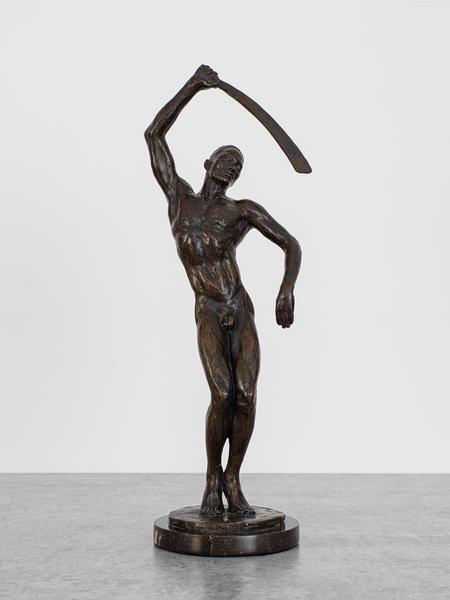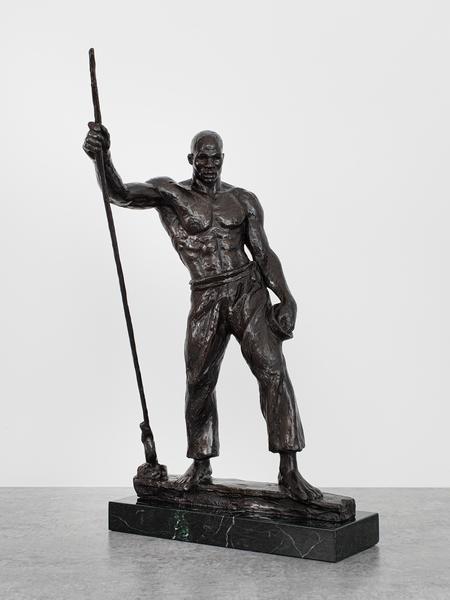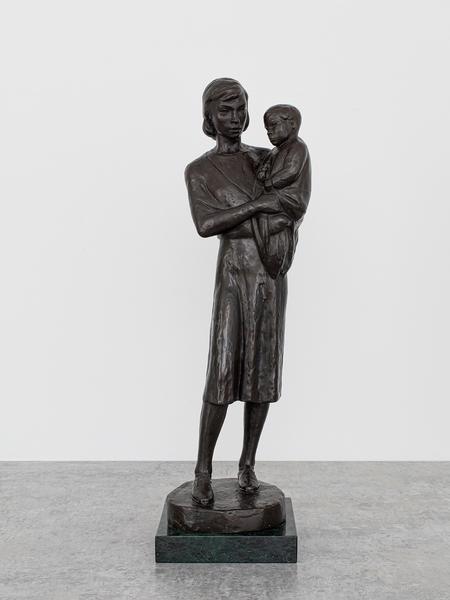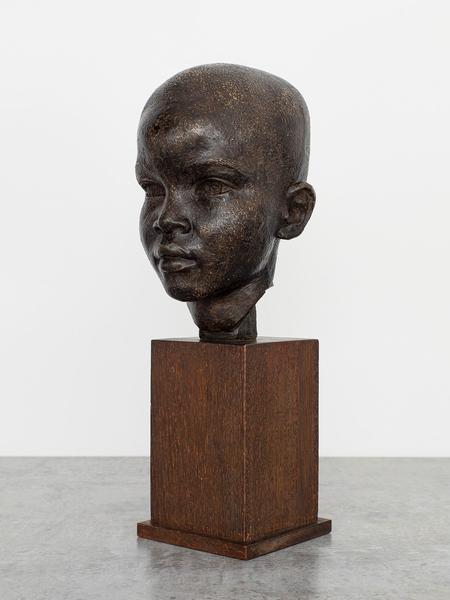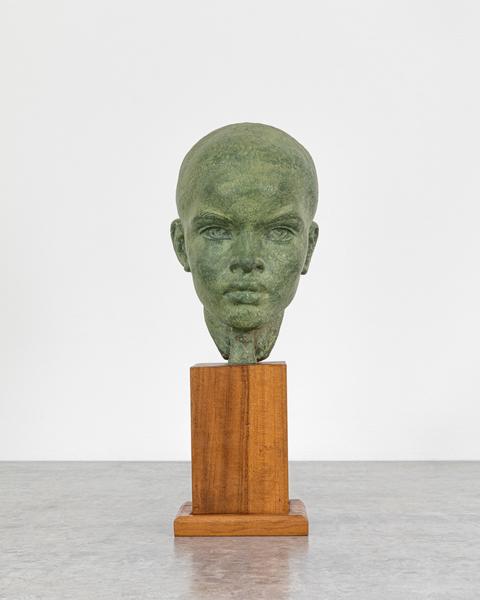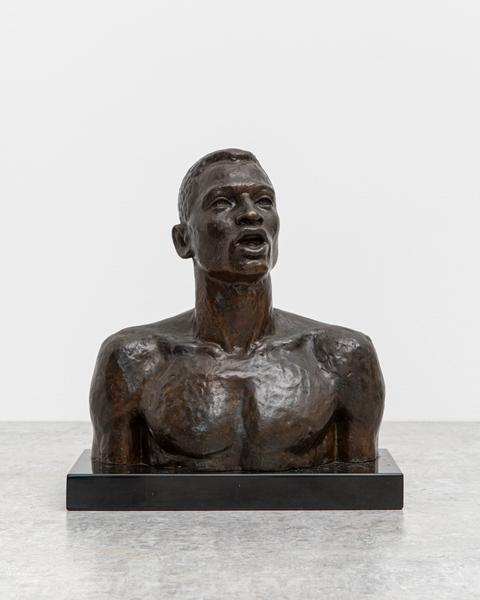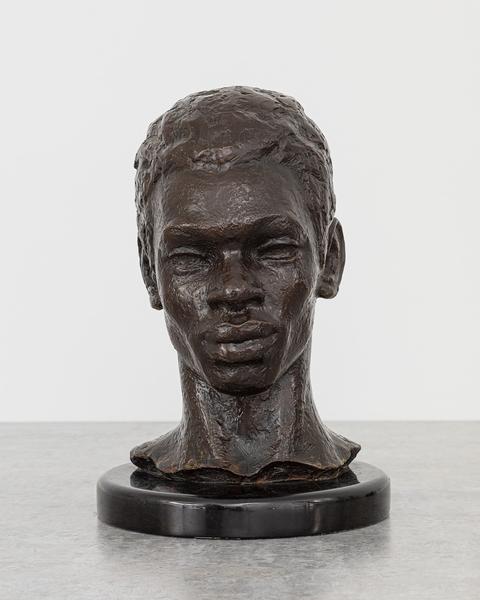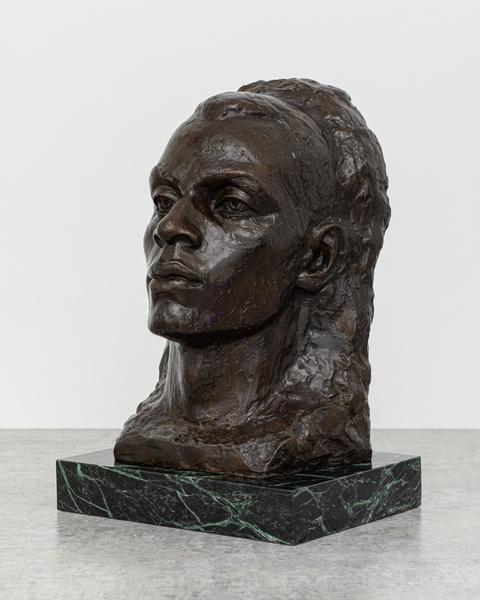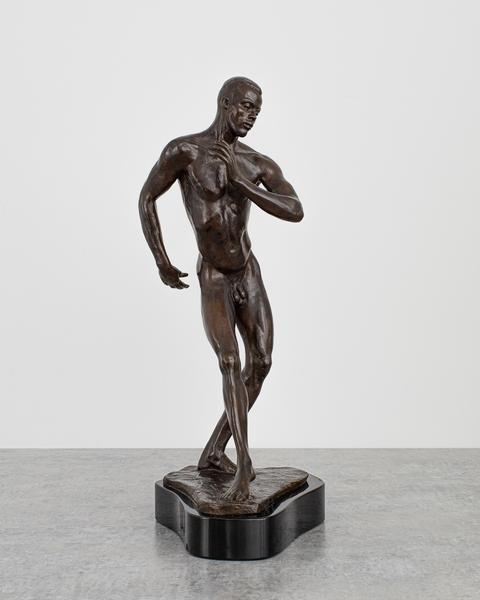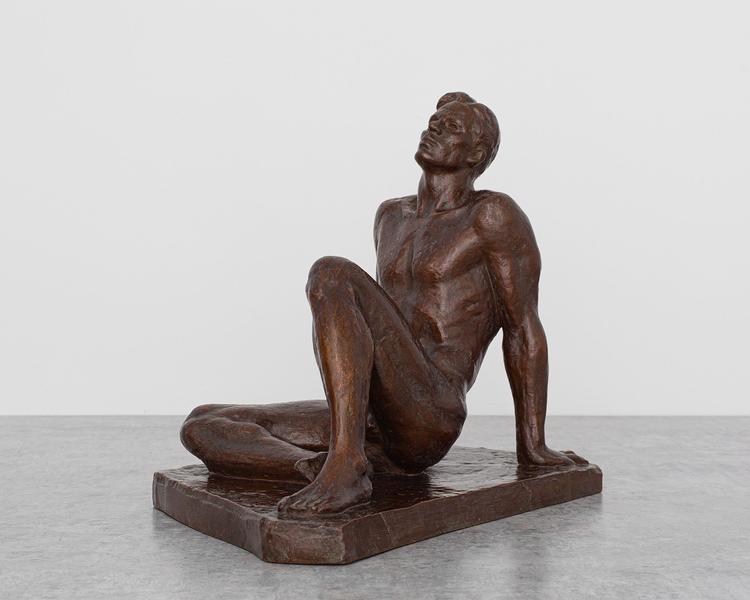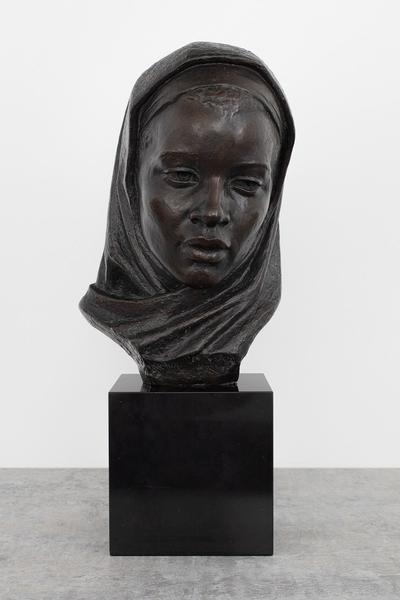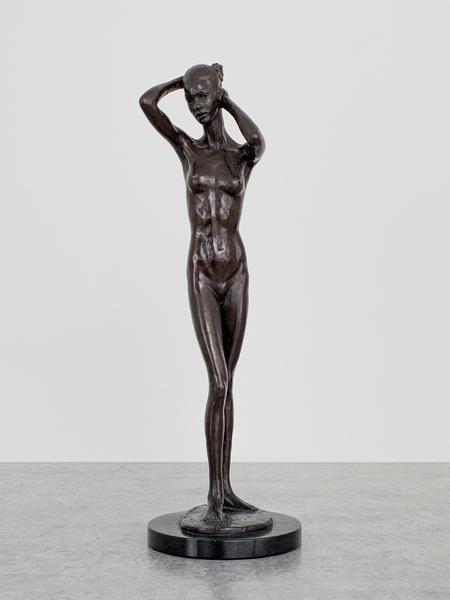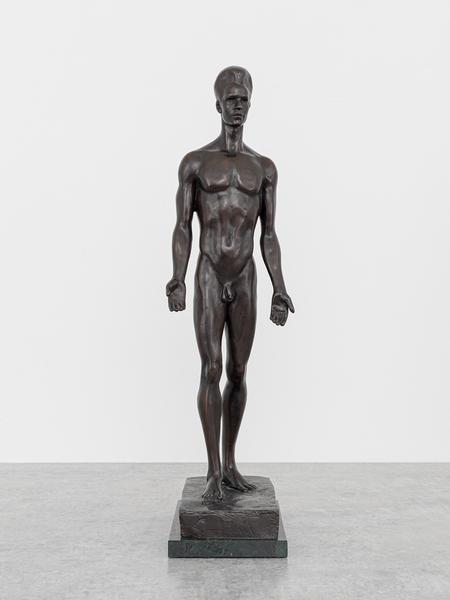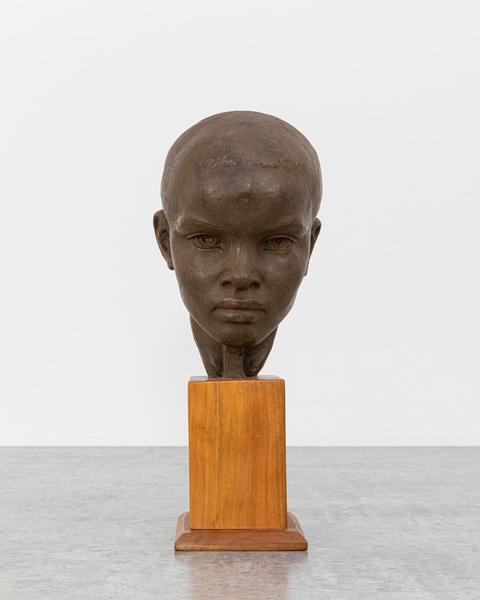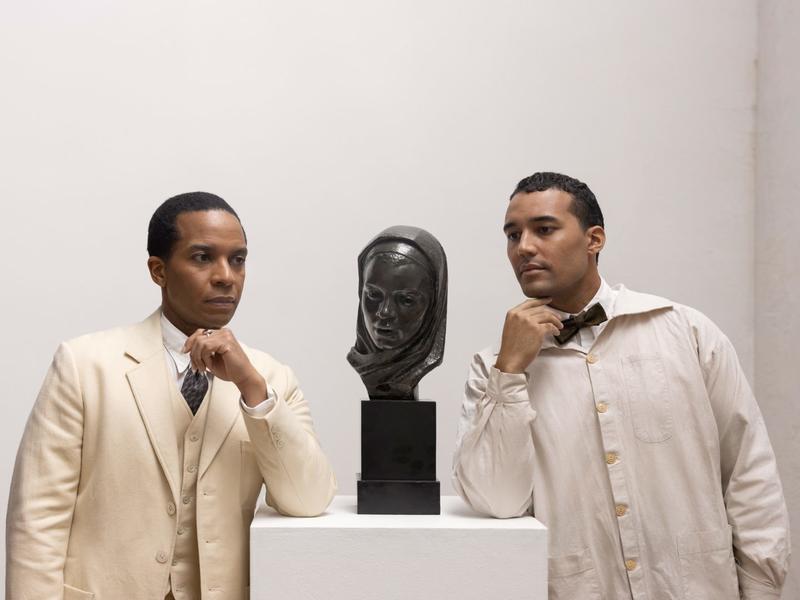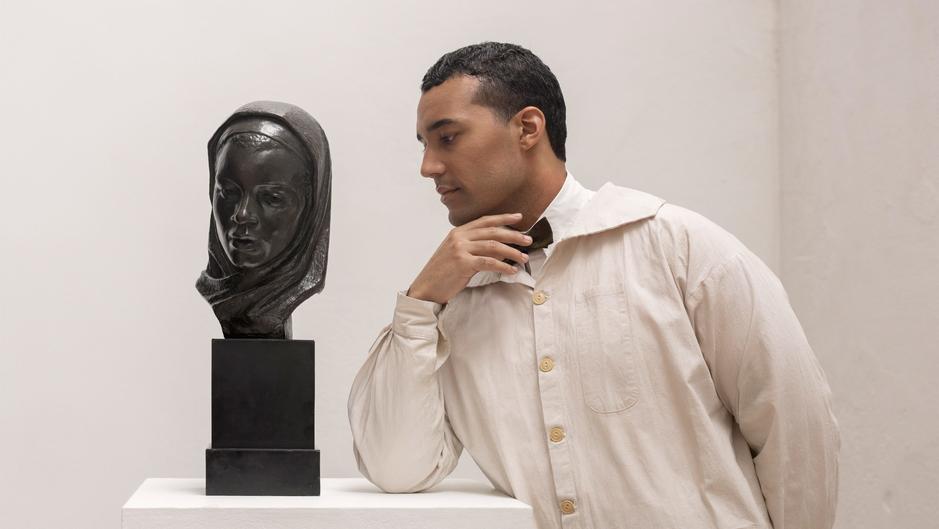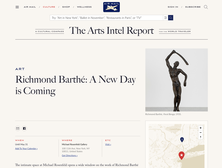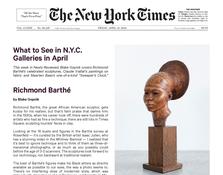“[Man] is connected to the universal mind, cosmic consciousness or God – whatever you want to call it – and the only way he can get help or inspiration is by going within himself and drawing on this power. This is where artists, poets, composers and scientists get their ideas and inspiration. It is the source of all knowledge. You just have to go within, relax and let it flow through you.”
—Richmond Barthé
Michael Rosenfeld Gallery is proud to present Richmond Barthé: A New Day Is Coming, a solo exhibition of sixteen sculptures by the Harlem Renaissance master Richmond Barthé (1901–1989) curated with renowned artist and filmmaker Isaac Julien (b.1960). The exhibition surveys the most productive decades of Barthé’s career, from 1929 to 1966, with an emphasis on the works of the 1930s and 1940s that established him as a foremost sculptor of his era. A New Day Is Coming also debuts a new film by Julien, which he describes as an “archival meditation” on Barthé and his work composed of historical documentary footage discovered during research for Once Again . . . (Statues Never Die) (2022), an immersive, five-screen film installation commissioned by the Barnes Foundation in Philadelphia.
A quintessential artist of the Harlem Renaissance, Barthé created a pioneering body of sculpture that elevates the Black subject. Much of Barthé’s oeuvre reflects his penchant for allegory and an embrace of classical realism that rendered him a stylistic outlier of his generation. He consistently sought to convey a universal sense of heroism reflective of the African diaspora through his sculpture, producing a refined body of bust-length portraits and full-length figures portraying a variety of individuals, including historical luminaries, archetypal, religious, and mythological subjects, and contemporary celebrities from the dance and theater worlds. While the Black male figure was a prevailing focus of Barthé’s practice, a consideration of his larger oeuvre reveals a career-long investment in depicting subjects of both genders with authority and empathy. Often working from memory, Barthé used his superior technical ability to imbue his sculptures with a sense of movement and emotional interiority, affectingly capturing the spiritual essence of his subjects. A New Day Is Coming features several of the artist’s most celebrated sculptures, such as Feral Benga (1935), which portrays Parisian cabaret dancer François “Feral” Benga; Julius (c.1940), a portrait of Julius Perkins, Jr., a child actor and musician active in Harlem; Stevedore (1937) a heroic representation of the working everyman; Black Madonna (1961), an iconographic interpretation of the Holy Mother as a Black woman; and The Negro Looks Ahead (1944), a symbolic rendition of Black fortitude.
Though Barthé was never open about his sexuality, his frequent portrayals of the male nude were recognized as expressions of homoerotic desire by his friends and peers in the art and literary world. During his years in New York (1929–1948), Barthé became a key figure in an elite milieu of creatives and intellectuals who discretely incorporated gay themes into their work, including poets Claude McKay, Langston Hughes, and Countee Cullen, cabaret performer Jimmie Daniels, playwright Harold Jackman, and photographer Carl Van Vechten. Barthé formed particularly important friendships with the poet Richard Bruce Nugent and Harlem Renaissance philosopher Alain Locke, the latter of whom considered Barthé’s sculpture a consummate embodiment of the New Negro Movement’s mandate to uplift the collective consciousness of Black America.
Both Locke and Nugent are important figures in Isaac Julien’s filmography. His breakthrough film Looking for Langston (1989) is a lyrical montage of real and imagined sequences exploring the lives and work of Harlem’s gay cultural luminaries of the 1920s and their descendants in the 1980s; the film features excerpts from Nugent’s short story “Smoke, Lilies, and Jade” (1926) as well as archival footage of Locke and Barthé. Once Again . . . (Statues Never Die) is, in many ways, a sequel to Looking for Langston, taking up many of the same themes and subjects. Structured around a conversation between Locke and Albert C. Barnes, an important collector of African sculpture and founder of the Barnes Foundation, the film poetically weaves a thematic exploration of Black queer desire into its timely meditation on the collection and display of African material culture in European and American institutions. Locke and Barthé’s relationship is a primary touchpoint in the film’s arc, and Barthé’s sculptures figure prominently in the film.

